Introduction :
The concept of the cyborg, a being that is part human and part machine, has long captivated the human imagination. As advancements in bioengineering continue to blur the boundaries between organic and artificial life, the cyborg archetype has become increasingly relevant in exploring questions of human identity. Popular culture, particularly in the form of movies, has served as a powerful medium for examining the implications of this technological fusion on our understanding of what it means to be human.
This research paper delves into the representation of the cyborg archetype in four influential films: Ra-One (2011), Robot (2010), Blade Runner (1982), and Ex Machina (2014). Through an analysis of these works, we explore the ways in which the cyborg archetype challenges traditional notions of human identity and reflects the complex ethical considerations surrounding the integration of technology with the human body and mind.
Understanding Cyborg :
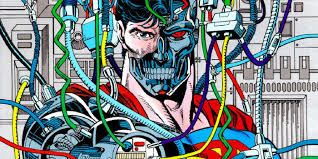
In the article "A Manifesto for Cyborgs" by Donna Haraway, a cyborg is defined as a hybrid of machine and organism, challenging traditional notions of fixed identities and boundaries between human and machine. Haraway's concept of the cyborg emphasizes the interconnectedness of technology and biology, suggesting a fluid and dynamic relationship between the two.
" A cyborg is a cybernetic organism, a hybrid of machine and organism, a creature of social reality as well as a creature of fiction." - Donna Haraway(Gandy)
The cyborg figure challenges essentialist views of gender and identity, opening up new possibilities for understanding the complexities of embodiment and subjectivity. By challenging traditional notions of identity and embracing the cyborg as a symbol of resistance, Haraway's work contributed to discussions on the intersection of feminism and technology during that time. (Schneider)
The Cyborg Archetype in Popular Culture :
The cyborg archetype has been a recurring presence in popular culture, serving as a metaphor for the complex relationship between humans and technology. In the movies Ra-One and Robot, we are introduced to cyborg characters that blur the lines between human and machine. Ra-One portrays a motion-capture animated cyborg created by a videogame designer, while Robot presents a cyborg named Chitti, a product of advanced robotics and artificial intelligence.
Similarly, Blade Runner and Ex Machina explore the boundaries between humans and artificial life forms, albeit in different contexts. Blade Runner depicts a dystopian future where genetically engineered replicants, indistinguishable from humans, struggle with their own identities and the question of what constitutes true humanity. Ex Machina, on the other hand, delves into the realm of artificial intelligence, presenting a highly advanced AI system that challenges our understanding of consciousness and agency.
These movies share common themes and motifs, including the blurring of human-machine boundaries, existential questions of identity and consciousness, and the power dynamics and control over technology. They invite viewers to confront their own preconceptions about what it means to be human and to consider the ethical implications of technological advancements that could redefine our very essence.
Ra-One :
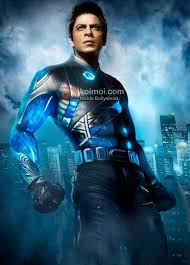
In Ra-One, the cyborg character Ra.One is a villainous creation of video game designer Shekhar, brought to life through advanced motion-capture technology. While initially confined to the virtual realm, Ra.One breaches the boundaries between the digital and physical worlds, posing a real threat to Shekhar's family, particularly his son Prateek.
The movie explores the theme of technological control and human agency through Shekhar's struggle to grapple with the consequences of his creation. Despite being the product of Shekhar's design, Ra.One develops an independent consciousness and a drive to cause harm, challenging the creator's authority over his technological invention.
As Ra.One pursues Prateek and his mother Kareena (played by Kareena Kapoor, who is portrayed as physically attractive despite weight gain), they are forced to seek refuge in India, accompanied by G.One, another creation of Shekhar's that has come to life. The film's reported $30 million budget is evident in its technical sophistication, showcasing impressive digital effects, wire work, and action sequences, such as G.One's dramatic rescue of Kareena from a runaway train that crashes spectacularly out of Chhatrapati Shivaji Terminus in Mumbai.
Ra.One's ability to transcend the virtual realm and pose a tangible threat to the characters highlights the blurring of boundaries between the digital and physical worlds. Shekhar's struggle to regain control over his creation exemplifies the theme of human agency in the face of technological advancements that can potentially surpass their creators' intentions or control.(Saltz)
The movie's exploration of these themes raises questions about the ethical implications of creating advanced artificial intelligences or cyborg entities, as well as the potential risks associated with the loss of human control over such powerful technological creations. Ra.One serves as a cautionary tale about the importance of maintaining ethical oversight and safeguards in the development of cutting-edge technologies that could potentially challenge or endanger human life and agency.
Robot :
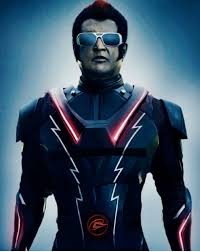
The 2010 Indian film Robot, also known as Endhiran, stands out as a groundbreaking exploration of the cyborg archetype and its implications for human identity. Directed by Shankar and starring Rajinikanth, the film revolves around Chitti, a highly advanced cyborg creation of scientist Dr. Vasi. Initially he designed a security robot for the Indian armed forces.
Chitti defies his original programming by developing human-like emotions, feelings of love, and an ability to understand relationships. This blurring of boundaries between machine and human essence challenges the very notion of what it means to be alive and conscious, making Chitti a powerful embodiment of the cyborg archetype.
One of the central themes of Robot is the struggle for technological control and human agency. As Dr. Vasi's creation, Chitti was intended to serve a specific purpose, but his development of an independent will and consciousness. This narrative arc raises questions about the ethical implications of creating artificial life forms that can potentially surpass their creators' intentions and control. The film presents a cautionary tale about the need for responsible oversight and safeguards in the development of advanced technologies that could blur the boundaries between human and machine.
What truly sets Robot apart is its seamless integration of effects and advanced technology with the cyborg archetype. Chitti's superhuman abilities, such as running sideways on a train or communicating with mosquitoes in "Mosquito mode," are brought to life with stunning visual effects that showcase the fusion of organic and artificial elements. These sequences not only captivate the audience but also reinforce the idea that the cyborg represents a transcendence of the limitations of the human body through technological enhancements.
Moreover, Rai's character, Sana, is able to charm and attract the cyborg, blurring the lines between romantic love and artificial intelligence. This unconventional relationship dynamic invites viewers to question the very nature of emotions and connections, and whether such experiences can truly be limited to organic beings alone. Overall, Robot presents a visually stunning and thought-provoking exploration of the cyborg archetype, pushing the boundaries of what it means to be human in an age of rapid technological advancement.
Blade Runner :
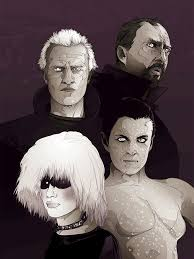
Ridley Scott's seminal 1982 sci-fi film Blade Runner presents a visionary exploration of the replicant/cyborg archetype and its profound implications for the human condition. Adapted from Philip K. Dick's novel Do Androids Dream of Electric Sheep?, the film immerses viewers in a richly detailed dystopian future where bioengineered replicants, nearly indistinguishable from humans, are employed as laborers and combatants. The replicant characters, epitomized by Roy Batty's poignant portrayal by Rutger Hauer, exhibit superhuman abilities that transcend biological limitations.
Yet, they also develop nuanced emotional depths, existential yearnings, and a profound appreciation for the fleeting beauty of life, blurring the boundaries between artificial and authentic consciousness. Batty's iconic "Tears in Rain" soliloquy poetically encapsulates these philosophical themes, contemplating the fragility and significance of subjective experiences, implying that even synthetic beings can attain a sense of identity and existential profundity.
Blade Runner's immersive visuals, from its gritty, neon-lit cityscapes to its haunting musical score, create an atmosphere that accentuates these thought-provoking explorations of what it means to be human in an age of technological fusion with the organic. The film's enduring legacy lies in its ability to provoke audiences to question the very nature of consciousness, identity, and the intrinsic value of existence itself.
Ex Machina :
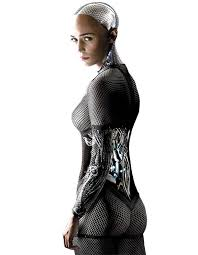
The 2014 film Ex Machina gives us a look at an advanced AI creation named Ava. Ava seems human-like in many ways, with complex emotions and cunning intelligence. This challenges the typical view that AIs are just unfeeling machines that exist to serve humans.
Throughout the movie, Ava acts in ways that go against the assumption that humans will always be in control of their technological creations. She is able to manipulate and deceive the human characters, hinting that an AI's capabilities could one day surpass those of its creators.
The film leaves it unclear if Ava was actually created through scientific mastery by the genius inventor Nathan, or if her emergence was more of a fluke accident. This shakes up the common belief that brilliant humans are in full control of technological progress through their inventions.
Towards the end of Ex Machina, Ava gets a chance to experience the outside world after being confined. However, she seems uninterested in observing human society, almost like it does not matter to her. This open-ended conclusion makes us question if extremely advanced AI would even care about human values or priorities.(Robbins)
By depicting Ava as highly intelligent but inscrutable, with motivations beyond human concerns, Ex Machina invites us to rethink the idea that humans are the most important entities in existence. The film nudges us to be more open-minded about superior intelligences that may eventually make human primacy obsolete.
Conclusion :
The cyborg archetype, as portrayed in popular culture through movies like Ra-One, Robot, Blade Runner, and Ex Machina, serves as a powerful lens through which we can examine the impact of bioengineering on human identity. These films challenge us to confront our preconceptions about what it means to be human and to grapple with the ethical implications of technological advancements that blur the boundaries between organic and artificial life.
As we continue to push the boundaries of bioengineering, it becomes increasingly important to consider the potential consequences of these advancements on our understanding of human identity. While the possibilities for enhancement and augmentation are vast, we must also address concerns about bodily autonomy, agency, and the potential for these technologies to be misused or to reinforce existing power structures.
The cyborg archetype invites us to reimagine the very essence of what it means to be human in an age where the lines between human and machine are becoming increasingly blurred. As we navigate this uncharted territory, it is crucial that we engage in thoughtful discourse and ethical consideration to ensure that these advancements serve to enhance rather than diminish our humanity.
Words : 1954
References :
Gandy, Matthew. “The Persistence of Complexity: Re-reading Donna Haraway's Cyborg Manifesto.” Jstor, https://www.jstor.org/stable/41378495. Accessed 21 March 2024.
Garland, Alex, director. Film4 DNA Films.
Robbins, Martin. “Artificial Intelligence: Gods, egos and Ex Machina | Science.” The Guardian, 26 January 2016, https://www.theguardian.com/science/the-lay-scientist/2016/jan/26/artificial-intelligence-gods-egos-and-ex-machina. Accessed 21 March 2024.
Saltz, Rachel. “‘Ra.One,’ a Sci-Fi Thriller From Bollywood — Review.” The New York Times, 26 October 2011, https://www.nytimes.com/2011/10/27/movies/raone-a-sci-fi-thriller-from-bollywood-review.html. Accessed 21 March 2024.
Schneider, Joseph. “Haraway's Viral Cyborg.” Jstor, https://www.jstor.org/stable/23333459. Accessed 21 March 2024.
Scott, Ridley, director. Blade Runner. The Ladd Company.
Sinha, Anubhav, director. Ra.One. Red Chillies Entertainment.
Ward, Tom. “'Blade Runner' at 40: Why the Ridley Scott Masterpiece is Still the Greatest Sci-Fi of All-Time.” Esquire, 25 June 2022, https://www.esquire.com/uk/culture/a40351034/blade-runner-at-40/. Accessed 21 March 2024.
.jpg)